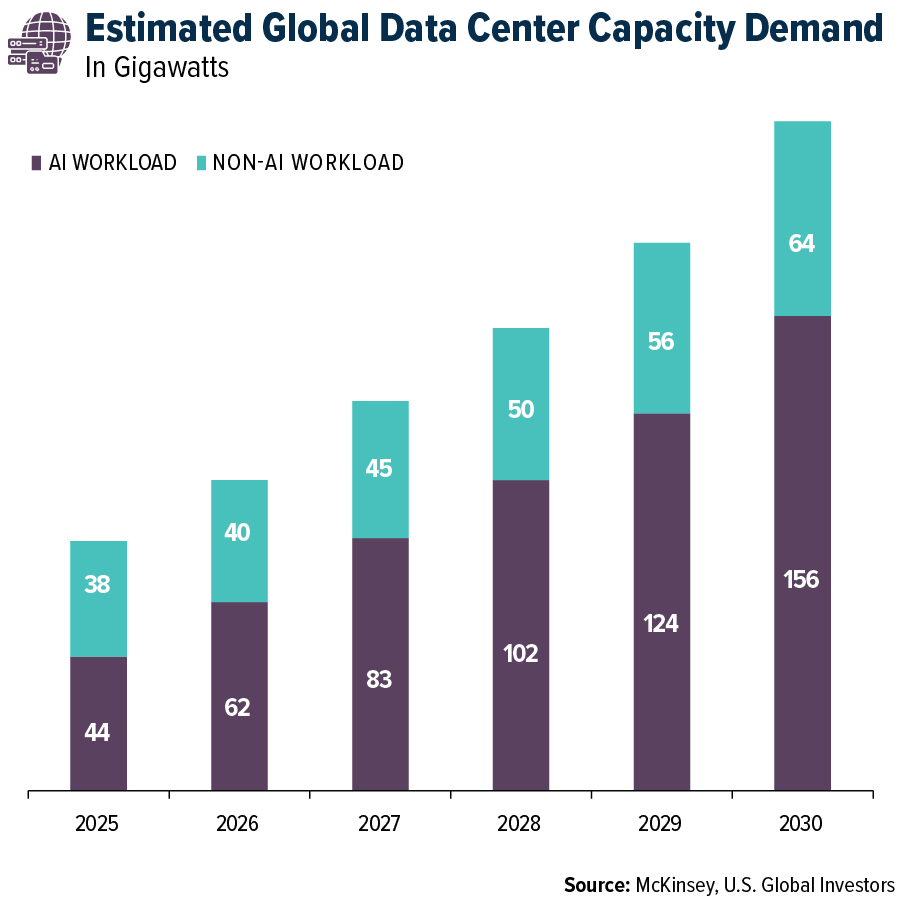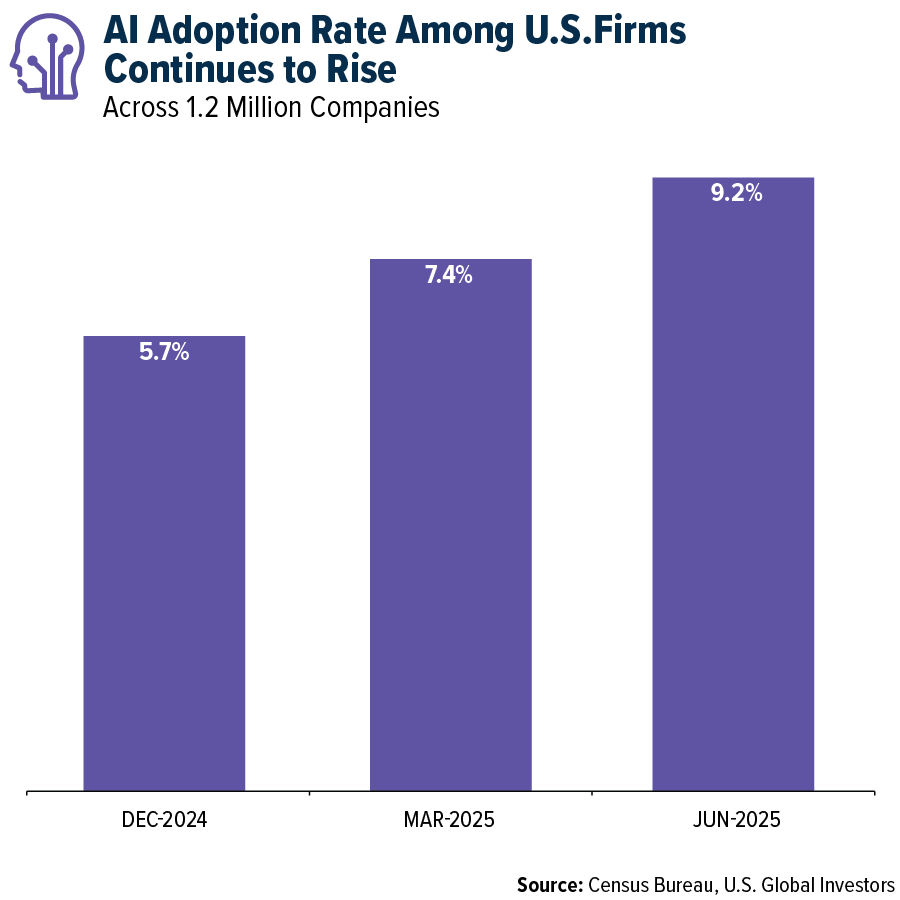pro promotional test article
If there’s one thing I’ve learned after decades in the investment world, it’s that government policy is a precursor to change. What’s unfolding right now with artificial intelligence (AI) in the U.S. is a full-blown industrial revolution, and it’s being backed and subsidized by the federal government like few things I’ve seen before.
Last week, President Donald Trump signed an executive order that could mark the beginning of a new era in U.S. manufacturing and energy. With the stroke of a pen, the White House declared AI data centers and their supporting infrastructure—semiconductors, transmission lines, power generation and more—a national priority.
What this means is faster permitting, regulatory rollbacks, access to federal land and potentially hundreds of billions in new investment flowing into this industry over the coming decade.
The Rise of the AI-Industrial Complex
I believe that what’s happening right now with AI is similar in scale and ambition to the defense buildout of the Reagan years or the shale revolution of the 2010s.
The Trump administration’s new executive order, signed on July 23, seeks to streamline the development of large-scale AI data centers that consume more than 100 megawatts of power. That’s a massive amount of compute muscle, but it’s necessary to train and run next-generation AI models.
Trump’s EO also prioritizes projects with $500 million or more in capital expenditures, fast-tracking them through what used to be a years-long regulatory slog.
In short, the White House is telling the tech industry: “Build it, and build it fast.”
Trump Touts Billions in Private Investment at Energy Summit
One of the more ambitious announcements so far came earlier this month during the Pennsylvania Energy and Innovation Summit, where Trump unveiled more than $90 billion in new private capital pledges for AI and energy infrastructure.
That includes $25 billion from Alphabet (NASDAQ:GOOGL) (Google’s parent company) and another $25 billion from alternative investment firm Blackstone (NYSE:BX), all dedicated to developing AI data centers and natural gas facilities in the Keystone State.
Why was Pennsylvania selected? The state sits atop the Marcellus Shale, one of the largest natural gas deposits in the world. These new AI centers are energy-hungry, and gas is abundant and cost-effective.
A $6.7 Trillion Infrastructure Boom
According to McKinsey, the global price tag to scale AI data centers could hit a staggering $6.7 trillion by 2030. Of that, $5.2 trillion would be earmarked for facilities designed to handle AI workloads.
That’s an unfathomably large number. To put it in perspective, that’s more than twice the size of Germany’s GDP.

In February, Goldman Sachs projected that AI-driven data centers could push global electricity demand up 165% by 2030. That’s in a world where many utilities have seen flat demand for decades. Now, they’re scrambling to add new capacity, and Goldman estimates the U.S. will need over 500,000 new power-sector workers just to keep pace.
Wall Street’s Money Is Following Washington’s Lead
In many ways, it seems as if AI is eating the world. According to PitchBook, AI startups in the U.S. alone raised $104 billion in the first half of 2025, nearly matching their total for the entire year of 2024. That represents more than 60% of all venture capital raised nationwide.
Elsewhere, Facebook (NASDAQ:META)’s parent company Meta is raising $29 billion from private credit firms to build out data centers, including a new 20-year agreement to power its AI efforts with nuclear energy from Illinois. Elon Musk’s xAI is reportedly on pace to burn through $13 billion this year as it builds custom AI infrastructure from scratch.
Even private equity is getting in on the act. The American Investment Council (AIC) reports that over $1 trillion has been invested in AI infrastructure since 2020, from data center buildouts to semiconductor fabs to clean energy projects.
AI Adoption Still in the Early Innings
A recent survey conducted by the Census Bureau found that just 9.2% of American companies are using artificial intelligence today. That’s up from 7.4% in the first quarter of this year and 5.7% at the end of 2024.

To put that in perspective, it took e-commerce nearly a quarter of a century to cross the 10% adoption threshold. AI is about to do it in just a few years.
This tells me we’re still in the early innings. While Wall Street may have already priced in some of the hype around AI, the actual adoption across the economy is just beginning.
The American AI Century
I believe we’ve entered a new industrial age—one where data is the new oil, and compute is the new horsepower. Washington is signaling that America’s future competitiveness depends on winning the AI race, and they’re laying the legal and financial groundwork to do just that.
I’m paying attention to policy. The last time we saw this kind of coordinated push was during the Space Race and the Reagan defense expansion. Both were followed by generational investment opportunities.
The AI revolution won’t be built overnight, but it’s already under construction. As always, the early movers stand to reap the biggest rewards.
***
All opinions expressed and data provided are subject to change without notice. Some of these opinions may not be appropriate to every investor. Holdings may change daily. Holdings are reported as of the most recent quarter-end. The following securities mentioned in the article were held by one or more accounts managed by U.S. Global Investors as of (06/30/2025): Alphabet Inc.
